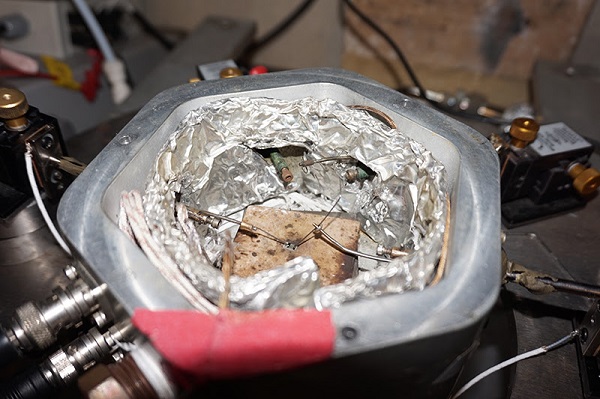
source: NOAA Monterey Bay National Marine Sanctuary photo/Chad King
If you’ve seen “My Octopus Teacher” you know how intelligent creatures of the deep can be. Now comes research from Purdue University indicating that the sea slug, a most basic and simple of sea animals, may help AI hardware get smarter.
A team of Purdue researchers today announced the findings of a study showing that a quantum material, nickel oxide, can mimic the sea slug’s essential intelligence features. The feature in question is the ability to discard a routine phenomenon that is not a threat, called “habituation,” over against a new form of stimuli that may a pose threat, called “sensitization.” Habituation is getting used to and tuning out repetitive stimulus, such as noises when driving the same commute to work, while sensitization is reacting to a new and possibly threatening stimulus, like avoiding a car veering out its lane on the highway.
Sea slugs have this skill; AI, sadly, doesn’t.
“AI has a really hard time learning and storing new information without overwriting information it has already learned and stored, a problem that researchers studying brain-inspired computing call the ‘stability-plasticity dilemma,’” Purdue said. “Habituation would allow AI to ‘forget’ unneeded information (achieving more stability) while sensitization could help with retaining new and important information (enabling plasticity).”
The study, publishing this week in the Proceedings of the National Academy of Sciences, was conducted by a team of researchers from Purdue University, Rutgers University, the University of Georgia and Argonne National Laboratory.
In conducting experiments on the sea slug’s “siphon withdrawal reflex,” the animal’s involuntary defensive reflex, neuroscience studies show the sea slug stops withdrawing its gill as much in response to being tapped on the siphon, showing habituation. But an electric shock to its tail causes its gill to withdraw dramatically, showing sensitization.
Nickel oxide has the potential to enable AI to take on the capability. “For nickel oxide, the equivalent of a ‘gill withdrawal’ is an increased change in electrical resistance,” Purdue said. “The researchers found that repeatedly exposing the material to hydrogen gas causes nickel oxide’s change in electrical resistance to decrease over time, but introducing a new stimulus like ozone greatly increases the change in electrical resistance.”
As part of the research project, a team under Kaushik Roy, Purdue’s Edward G. Tiedemann Jr. Distinguished Professor of Electrical and Computer Engineering, built an algorithm modeling nickel oxide’s behavior that used these habituation and sensitization strategies to categorize data points into clusters.
“The stability-plasticity dilemma is not solved at all,” Roy averred. “But we’ve shown a way to address it based on behavior we’ve observed in a quantum material. If we could turn a material that learns like this into hardware in the future, then AI could perform tasks much more efficiently.”

By stimulating this quantum material (tiny gray-and-black striped rectangle, center) with gases, researchers discovered it could mimic basic forms of learning found in the sea slug. (Purdue University photo/Kayla Wiles)
This early-stage research is a long way from delivering real-world results, of course. The researchers said it’s yet to be determined how to apply nickel oxide-based habituation and sensitization in large-scale systems or how the material could respond to stimuli while integrated into a computer chip.
Along with the Purdue experiments, a team at Rutgers University “performed detailed theory calculations to understand what was happening within nickel oxide at a microscopic level to mimic the sea slug’s intelligence features,” Purdue said. In addition, Argonne National Laboratory characterized the nickel oxide sample’s properties and the University of Georgia measured conductivity to analyze the material’s behavior.
The work was funded by the National Science Foundation, the Air Force Office of Scientific Research, the Army Research Office, the Office of Naval Research, and the Center for Brain Inspired Computing, a Joint University Microelectronics Program center sponsored by the Semiconductor Research Corporation and the Defense Advanced Research Projects Agency. The research used the resources of the Advanced Photon Source, a U.S. Department of Energy Office of Science User Facility operated for the DOE Office of Science by Argonne National Laboratory.



